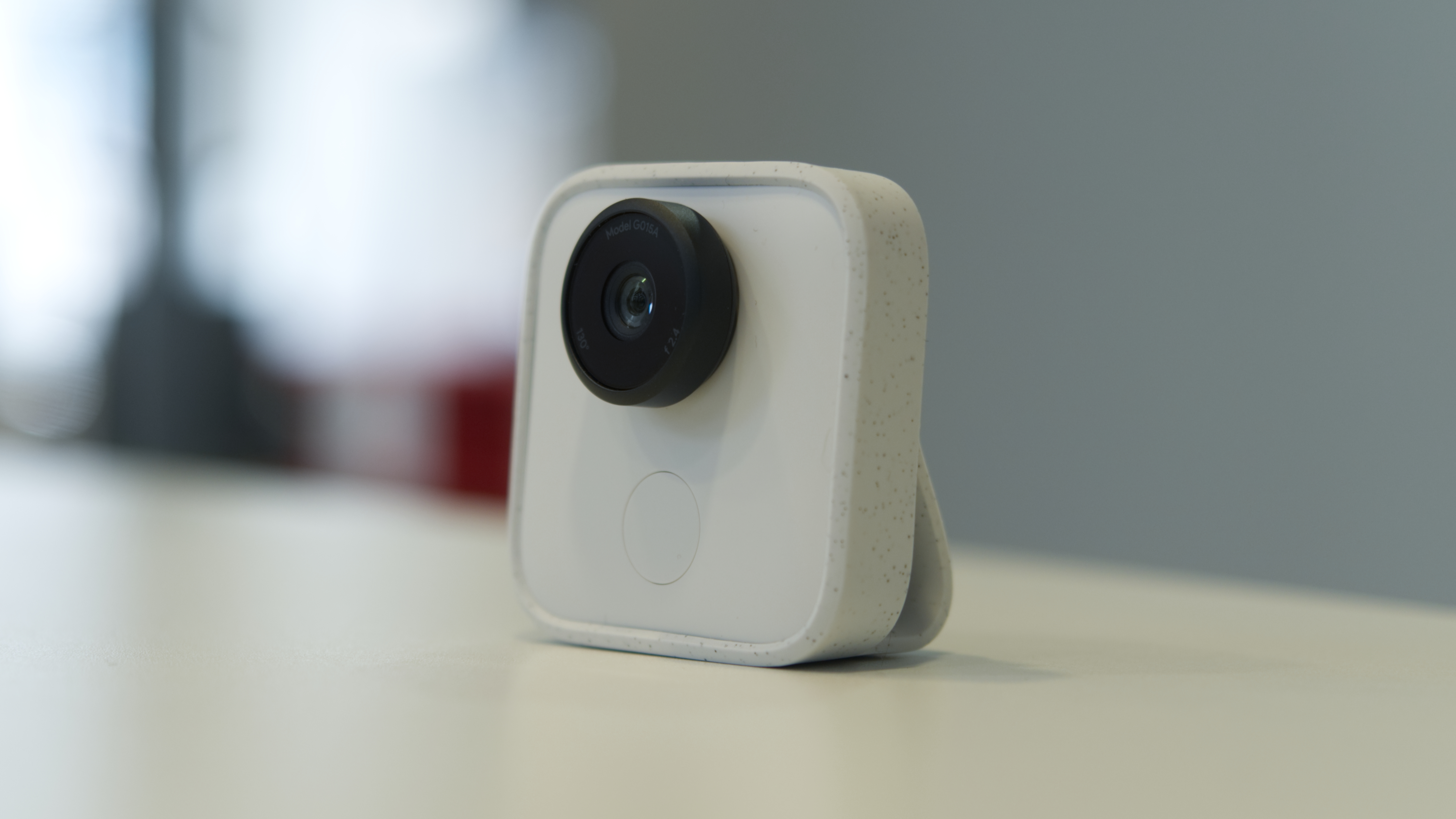TechRadar Verdict
Google's Clips camera is smart. But for a product that's to be trusted to capture life's best moments, it doesn't fully deliver on that promise yet. Depending on your lifestyle (and patience level), it can pump out results, but it's usually way more 'miss' than 'hit'.
Pros
- +
Small size
- +
Unique functionality
- +
When it works, it works well
Cons
- -
Doesn't record audio
- -
Quite expensive
- -
Questionable judgment for recording
Why you can trust TechRadar
Google Clips is a camera, but that’s underselling it a bit. It’s a smart camera that utilizes an eerily good machine learning algorithm to identify, then auto-record scenes containing familiar faces, pets and more.
Similar to a normal point-and-shoot, you turn on Clips when you want to use it. There’s a shutter button, too, which you can press to capture seven seconds of still photos encoded in a shareable video file. But to fully take advantage of Clips is to let it run on auto-pilot.
At its best, Clips catches the moments that you aren’t prepared for, ones that you can’t react quickly enough to capture. We all know the feeling of having just missed out on the perfect photo or video – this camera aims to put an end to that issue. Better yet, Google’s camera succeeds where others don’t by letting you step in front of its lens to participate in your life, even if it can feel a little orchestrated to those in the know of being recorded.
Update: Google has issued a small update to Clips that brings high-resolution manual stills and pinch-to-zoom functionality to the companion app.

Google isn’t oblivious to the fact that most of us already use phones and DSLR cameras to take photos and videos. While those options excel at capturing pinpoint moments in time, Clips is more of a broad strokes approach by comparison, and is said to improve over time thanks to machine learning.
Putting its smarts aside, this camera will feel trivial for some from a usability perspective. Sure, you can carry it around and capture things that way, though why not just use a phone, which likely houses a more capable lens? Also, I’ve learned that it’s a really big ask to make sure that my life unfolds within the camera’s 130-degree field of view. I often found that, coincidentally, more interesting stuff was always happening off-screen. It takes more effort than I expected to make Clips feel useful.
At $249, Clips isn’t the most affordable way of catching the moments that fall between the gaps of your DSLR or phone use. And unfortunately, throughout the review process, it showed that it's not so great in its current form. I can't say that it captured anything that really showed off its unique ability to know, better than I do, when’s best to start capturing.
Sign up for breaking news, reviews, opinion, top tech deals, and more.
For now, you can safely stick with your trusty camera. But we'll keep watching Clips and will make a note should it improve.

Design
Like other Google products, like Google Home, Google Daydream, and Google Pixel 2, Clips is minimalistic, yet quite expressive in its design. While it’s hard to confuse it as anything but a camera, it certainly looks unique compared to other quick-capture cameras like the Samsung Gear 360, appearing more like a large Tile tracker keyring than something that takes footage.
On its front, Clips’ lens takes up most of the real estate. It’s a clever, intuitive decision to make twisting it work as its power switch, and thanks to the colored indicator, it’s easy to tell when it’s off or on. Not just that, but there are a series of lights that illuminate when powered on to clue you into what the camera’s doing, as well as notify the general public that, “hey, you might be on camera right now”.
Snug beneath the lens is the shutter button, which looks a lot like a fingerprint sensor. Clips is skilled at shooting footage automatically based on what it finds interesting, as instructed by its machine learning algorithm. But Google told us that the main reason behind the button is simply because there are some moments when you’ll have better judgment than Clips will.

Moving to the back, Google’s mini camera is clad in a creamy teal shell that feels built to last. But if don’t want to subject it to scratches or scuffs, you can pop it in the included silicon shell. It’s actually how this camera gets its “Clips” moniker – you can clip it anywhere it will fit. I’ve found that, despite its flexibility, the clip wasn’t able to fit onto much in my apartment. Your mileage will vary, of course. But one thing that the clip is useful for in any situation is as a more stable stand. Clips can stand by itself, but it isn’t so wobbly with the case.
There’s a USB-C charging port on the bottom, and next to it, a reset button puts Clips back to factory default settings.

Cameron is a writer at The Verge, focused on reviews, deals coverage, and news. He wrote for magazines and websites such as The Verge, TechRadar, Practical Photoshop, Polygon, Eater and Al Bawaba.
